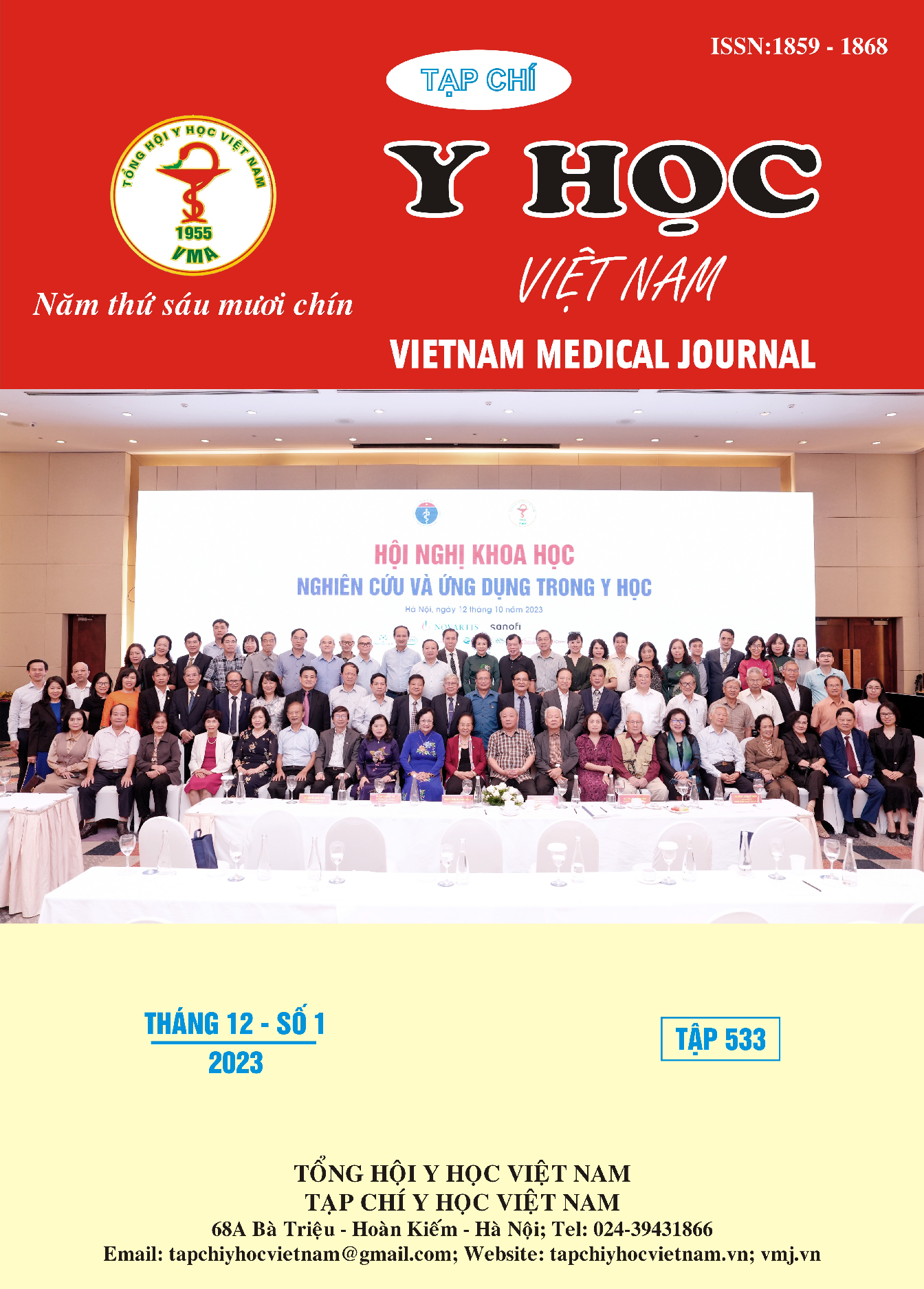EFFECTIVE EVALUATION OF LOW-LEVEL LASER HE-NE IN TREATMENT OF SURGICAL WOUND AFTER LUMBAR SPINE SURGERY
Main Article Content
Abstract
Objectives: To evaluate the efficacy of low-level laser He-Ne therapy in treatment of surgical wound after spinal surgery. Subjects and methods: descriptive, prospective study was done on 150 patient who underwent lumbar spinal surgery and given antibiotic prophylaxis during 24 hours after operation in combination with laser He-Ne therapy for treatment of surgical wound from 1st day post-operation to discharge. Surgical wound pain was assessed by VAS score at point of before and after using laser He-Ne therapy at the 1st day post-operation; patient satisfaction was evaluated by 5-point Liker scale; the surgical wound was followed-up for 3 months after surgery and the infected wound was noted. Results: the VAS of surgical wound pain was 6.0 ± 1.1 before which reduced to 2.7 ± 0.9 after using laser He-Ne therapy; patient satisfaction was 4.4 ± 0.5 according to 5-point Liker scale. Conclusions: The effects of low-level laser He-Ne therapy in treatment of surgical wound after lumbar spine surgery included the reduction of surgical wound pain, the prevention of surgical site infection, and increasing patients’ satisfaction.
Article Details
References
2. Habibi, Z., saedinejad, Z. and Eilami, O. (2014) ‘Single Dose Antibiotic Prophylaxis in Lumbar Stenosis or Disc Surgery: A Review of 117 Cases’, Archives of Neuroscience, 2(1), pp. 10–13. doi: 10.5812/archneurosci.15055.
3. Jackson, R. F., Roche, G. and Mangione, T. (2009) ‘Low-Level Laser Therapy Effectiveness for Reducing Pain after Breast Augmentation’, The American Journal of Cosmetic Surgery, 26(3), pp. 144–148. doi: 10.1177/074880680902600303.
4. Nesioonpour, S. et al. (2014) ‘The effect of low-level laser on postoperative pain after tibial fracture surgery: a double-blind controlled randomized clinical trial.’, Anesthesiology and pain medicine, 4(3), p. e17350. doi: 10.5812/aapm.17350.
5. Samaneh, R. et al. (2015) ‘Laser therapy for wound healing: A review of current techniques and mechanisms of action’, Biosciences Biotechnology Research Asia, 12(September), pp. 217–223. doi: 10.13005/bbra/1626.
6. Shaffer, O. W. et al. (2013) Recommendations Regarding antibiotic prophylaxis in spine surgery., Evidence-based clinical guidelines for multidisciplinary spine care. Antibiotic prophylaxis in spine surgery. Available at: https://www.spine.org/Documents/ResearchClinicalCare/Guidelines/AntibioticProphylaxis.pdf.
7. WHO (2018) Global guidelines on the prevention of surgical site infection. Available at: http://www.who.int/gpsc/ssi-prevention-guidelines.
8. Yamamoto, M. et al. (1996) ‘Perioperative antimicrobial prophylaxis in neurosurgery: clinical trial of systemic flomoxef administration and saline containing gentamicin for irrigation.’, Neurologia medico-chirurgica, 36(6), pp. 370–376. doi: 10.2176/nmc.36.370.


